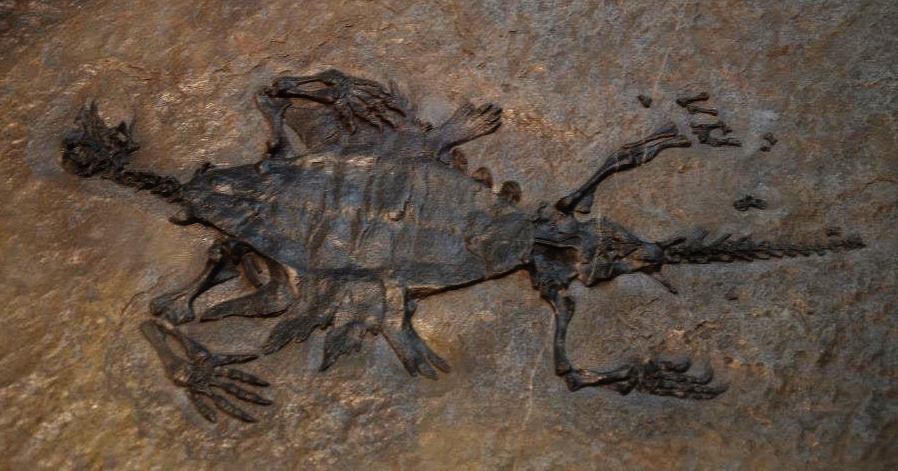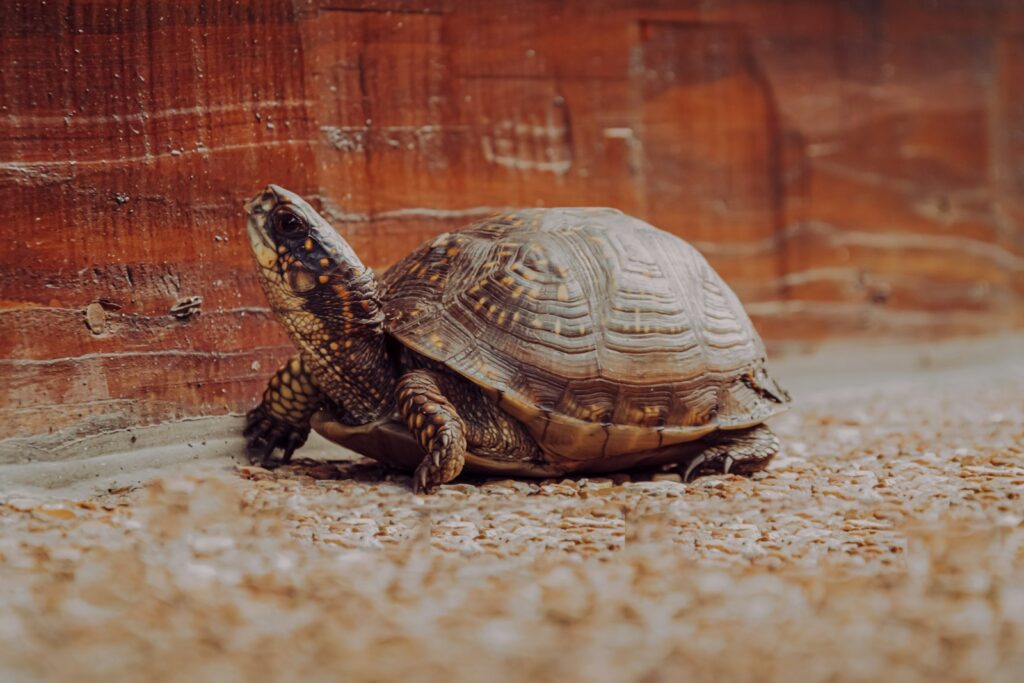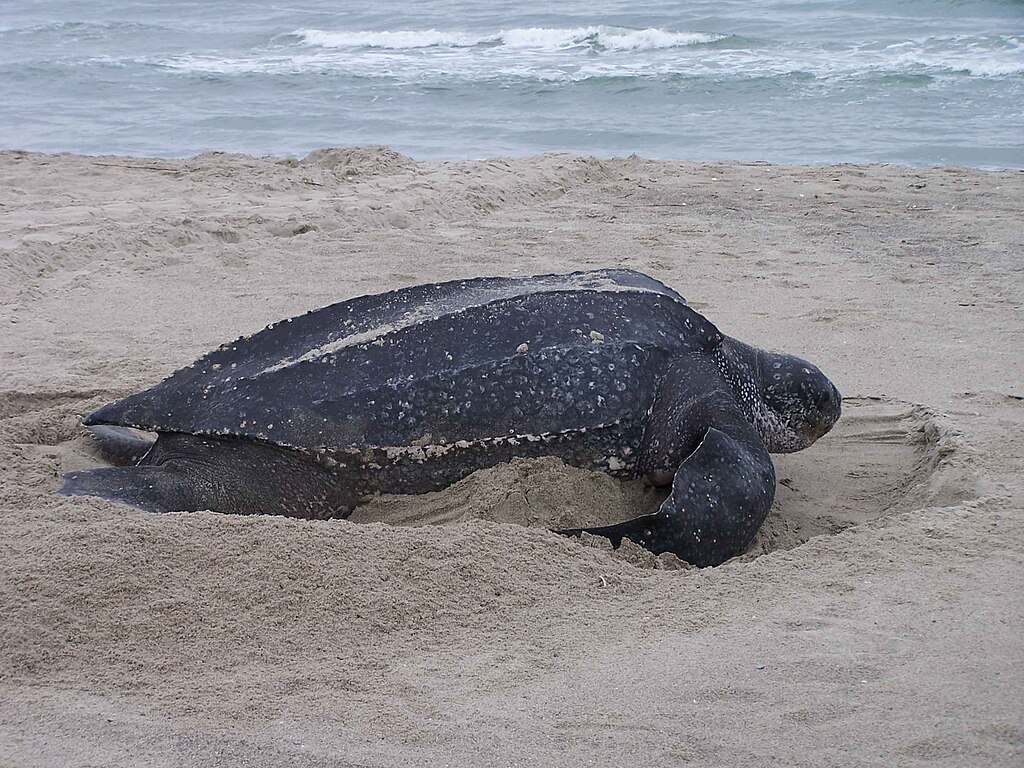When dinosaurs roamed the Earth over 65 million years ago, another remarkable group of reptiles was already well-established: turtles. These resilient creatures have persisted through mass extinctions, climate changes, and continental shifts, earning them the title of living fossils. Today’s turtles are the direct descendants of ancient species that witnessed the rise and fall of the dinosaurs, making them one of the most successful and enduring vertebrate lineages on our planet. Their remarkable evolutionary story, unique adaptations, and continued survival against mounting modern threats make turtles truly extraordinary survivors worth understanding and protecting.
Ancient Origins: A 220-Million-Year Legacy

Turtle evolution traces back approximately 220-230 million years to the Late Triassic period, predating many dinosaur groups by millions of years. The earliest known turtle ancestor, Odontochelys semitestacea, discovered in China, possessed a partial shell covering its underside but lacked the complete carapace seen in modern turtles. This transitional fossil provides crucial evidence of how the turtle’s distinctive shell evolved gradually over time. By the Jurassic period, about 200 million years ago, turtles had developed the full shell structure we recognize today. Their fundamental body plan has remained remarkably consistent since then, demonstrating one of the most conservative evolutionary designs in the animal kingdom. This ancient lineage makes turtles one of the oldest reptile groups still alive, having survived multiple mass extinction events that claimed countless other species.
Evolutionary Marvel: The Shell as Survival Strategy

The turtle’s shell represents one of evolution’s most innovative adaptations, essentially turning the reptile’s ribcage inside-out through a remarkable developmental process. Unlike any other vertebrate, a turtle’s shoulder blades sit inside its ribcage rather than outside it. The carapace (upper shell) is formed from expanded ribs and vertebrae that fuse together, while the plastron (lower shell) derives from modified collar and abdominal bones. This protective armor offered significant advantages against Mesozoic predators, allowing turtles to survive when many other reptile groups perished. Modern research using embryology and genetics has revealed how developmental pathways were dramatically altered to achieve this unique body plan. The shell’s effectiveness as a defensive structure has remained largely unchanged for over 200 million years, proving that some evolutionary innovations are so successful they require little modification across geological timescales.
Surviving the Unthinkable: How Turtles Outlived Dinosaurs

The Cretaceous-Paleogene (K-Pg) extinction event that eliminated non-avian dinosaurs approximately 65.5 million years ago marked a catastrophic moment in Earth’s history, wiping out an estimated 75% of all species. Turtles, however, displayed remarkable resilience during this planetary crisis. Scientists attribute their survival to several key adaptations, including their ability to hold their breath for extended periods, retreat into protective shells, and survive on minimal food resources for months. Freshwater species likely benefited from aquatic environments that buffered them against extreme temperature changes. Additionally, turtles’ omnivorous and opportunistic feeding habits allowed them to adapt their diets according to available resources in the post-extinction landscape. Unlike many specialized reptiles that disappeared, turtles’ generalist approach to survival—combined with their relatively slow metabolism—enabled them to persist through conditions that proved fatal to countless other reptilian contemporaries.
Diversity Through Time: From Ancient Seas to Modern Habitats

The turtle family tree has branched extensively throughout its 220-million-year history, producing an impressive diversity of specialized forms. Early turtles were primarily aquatic, but by the Jurassic period, terrestrial species had begun to emerge, expanding into new ecological niches. Giant prehistoric sea turtles like Archelon grew to lengths of over 4 meters, far larger than any modern turtle species. During the Cretaceous period, the major living turtle lineages had already differentiated, establishing the foundational branches that would lead to today’s 356 recognized species. After surviving the dinosaur extinction, turtles underwent another adaptive radiation during the Cenozoic Era, evolving specialized forms for varied habitats from tropical rainforests to desert environments. This evolutionary journey has produced remarkable specializations, from the paddle-like flippers of sea turtles to the high-domed shells of tortoises adapted for life in arid regions, demonstrating how this ancient template has been modified to succeed across vastly different environments worldwide.
Living Fossils: Unchanged Yet Highly Specialized

The basic body plan of turtles has remained remarkably consistent for over 200 million years, earning them the title of “living fossils”—organisms that appear similar to their ancient ancestors. The fundamental shell structure, skull anatomy, and limb arrangement would be recognizable to a time traveler from the Jurassic period. However, this stability in overall design masks the remarkable specializations that have allowed different turtle species to thrive in diverse environments. Marine turtles evolved streamlined shells and flipper-like limbs for oceanic life, while snapping turtles developed powerful jaws and ambush hunting techniques for freshwater survival. Softshell turtles reduced their bone content for increased agility, and box turtles gained hinged plastrons that close completely for protection on land. This paradoxical combination of evolutionary conservatism in basic structure while developing highly specialized adaptations demonstrates nature’s capacity to refine a successful design without fundamentally changing it.
Evolutionary Oddities: Breathing, Reproduction, and Longevity

Turtles have developed several unusual biological features throughout their long evolutionary history that distinguish them from other reptiles. Perhaps most remarkably, many turtle species can perform cloacal respiration—essentially breathing through their rear ends—by pumping water across specialized vascular surfaces that extract oxygen. This adaptation allows aquatic turtles to remain submerged for extended periods, even hibernating underwater during winter months. Their reproductive strategy involves external fertilization and egg-laying, with many species demonstrating temperature-dependent sex determination, where incubation temperatures determine whether eggs develop as males or females—a system that predates the dinosaurs. Most extraordinary is their exceptional longevity; turtles are among the longest-lived vertebrates, with documented lifespans exceeding 150 years in some tortoise species. This extreme longevity correlates with slow metabolisms, efficient cellular repair mechanisms, and remarkable resistance to cancer and age-related diseases, making them valuable subjects for research into the biology of aging.
Ancient Intelligence: The Cognitive Abilities of Turtles

Despite their reputation for slowness, the cognitive capabilities of turtles have been significantly underestimated throughout scientific history. Recent research reveals surprising intellectual abilities that have helped these ancient reptiles survive across geological epochs. Studies demonstrate that turtles possess excellent spatial memory, allowing them to create detailed mental maps of their environments for finding food, suitable basking spots, and migration routes. Many species display observational learning, capable of solving problems after watching other turtles succeed at similar tasks. Red-footed tortoises have demonstrated capabilities previously thought limited to mammals and birds, such as navigating mazes and recognizing visual patterns. Eastern box turtles can remember the location of food sources for at least three years, while sea turtles navigate thousands of miles of open ocean using complex geomagnetic sensing. These cognitive abilities, combined with their patient, methodical approach to problem-solving, have contributed significantly to the turtle’s evolutionary success story spanning hundreds of millions of years.
Time Travelers: Ancient DNA and Genetic Insights

Modern genetic research has provided extraordinary insights into turtle evolution, revealing secrets preserved in their DNA for millions of years. Genomic studies confirm that turtles belong to a group called Archelosauria, making them more closely related to birds, crocodiles, and dinosaurs than to lizards and snakes. Their genomes contain remarkably conserved sections that have changed little since the Jurassic period, providing researchers with a living window into ancient reptilian genetics. Particularly fascinating are the genes governing shell development, longevity, and resistance to oxygen deprivation, which show unique adaptations not found in other vertebrates. Comparative genomics between various turtle species has helped reconstruct their evolutionary history, confirming that the split between hidden-necked turtles (which withdraw their necks straight back) and side-necked turtles (which bend their necks sideways) occurred over 180 million years ago during the breakup of the supercontinent Pangaea. This genetic time capsule continues to provide scientists with valuable information about vertebrate evolution and adaptation that would otherwise be lost to time.
Global Navigators: Migration Patterns Across Millennia

Among the most remarkable turtle behaviors that have persisted since prehistoric times are the epic migration patterns exhibited by several species. Sea turtles undertake some of the longest migrations of any reptile, with leatherbacks traveling over 10,000 miles annually between feeding and nesting grounds. These migration routes appear to have been established millions of years ago, with turtle populations following ancient paths encoded in their genetic memory. Female sea turtles demonstrate extraordinary natal homing, returning to lay eggs on the same beaches where they hatched decades earlier—a behavior that likely evolved during the Cretaceous period. Genetic studies reveal that these navigation abilities rely on detecting Earth’s magnetic field with incredible precision, allowing turtles to determine both latitude and longitude using the planet’s geomagnetic signature. Fossil evidence suggests that prehistoric sea turtles followed similar pathways across ancient oceans, demonstrating the remarkable consistency of these behaviors across evolutionary time. These ancient migration patterns now face unprecedented disruption from climate change, coastal development, and ocean pollution, threatening navigational systems that have functioned reliably for millions of years.
Climate Survivors: Adapting Through Global Changes

Throughout their 220-million-year history, turtles have witnessed and survived dramatic climate fluctuations that transformed Earth’s environments multiple times. They persisted through the hot, humid Jurassic period when global temperatures were significantly higher than today, as well as through several ice ages when much of the planet was covered in glaciers. This climate resilience stems from several key adaptations, including behavioral thermoregulation, where turtles actively seek microenvironments that meet their temperature needs. Many species exhibit remarkable hibernation capabilities, allowing them to survive seasonal extremes by dramatically reducing their metabolic rates. Temperature-dependent sex determination, while potentially vulnerable to rapid climate change, has historically provided population flexibility by naturally adjusting sex ratios in response to environmental conditions. The variety of habitats occupied by different turtle species—from deserts to tropical forests to polar waters—demonstrates their evolutionary adaptability to diverse climate regimes. This proven adaptability across geological timescales offers hope that at least some turtle species may be able to adapt to current human-induced climate change, though the unprecedented rate of current warming poses significant challenges even for these seasoned climate survivors.
Ecosystem Engineers: Ecological Roles Since Prehistoric Times

Throughout their ancient history, turtles have functioned as crucial ecosystem engineers, shaping the environments they inhabit in ways that increase biodiversity and ecosystem health. Fossilized evidence suggests prehistoric turtles performed ecological roles similar to their modern descendants, creating and maintaining habitat features that benefited countless other species. Large tortoises have functioned as seed dispersers for millions of years, with studies showing that seeds passing through tortoise digestive systems often have enhanced germination rates. Freshwater turtles serve as important scavengers and decomposers in aquatic systems, helping to recycle nutrients and maintain water quality. Nesting sea turtles transfer vital nutrients from marine to coastal ecosystems, with each nest bringing approximately 2.5 kg of nutrients to often nutrient-poor beach environments. The burrowing activities of many tortoise species create shelter opportunities for other animals while aerating soil and enhancing plant growth patterns. These ecological services have been performed continuously for millions of years, making turtles keystones in many ecosystems and highlighting why their modern conservation is crucial not just for the reptiles themselves but for entire ecological communities that have evolved alongside them.
Modern Threats: Endangered Living Fossils

Despite surviving multiple mass extinctions and 220 million years of evolutionary challenges, turtles now face their greatest threat in human activity. Approximately 61% of all modern turtle species are threatened or already extinct, making them among the most endangered vertebrate groups on Earth. Habitat destruction remains the primary threat, with wetlands, forests, and nesting beaches being developed or degraded at unprecedented rates. The illegal wildlife trade targets many species for exotic pets, traditional medicines, and luxury food markets, with some rare species fetching tens of thousands of dollars on black markets. Climate change poses existential threats, particularly through temperature-dependent sex determination, with some populations already producing dangerously skewed sex ratios. Fishing bycatch claims hundreds of thousands of sea turtles annually, while pollution—especially plastic debris—causes mortality through ingestion and entanglement. Road mortality significantly impacts many terrestrial and freshwater species, fragmenting populations and preventing natural movement patterns. The combined pressure of these anthropogenic threats is driving many species toward extinction at rates far exceeding natural background levels, creating a conservation crisis for reptiles that outlived the dinosaurs but may not survive the human era.
Conservation Success Stories: Saving Ancient Lineages

Despite the serious challenges facing turtles worldwide, dedicated conservation efforts have achieved remarkable successes in reversing population declines for several species. The Kemp’s ridley sea turtle, once on the brink of extinction with fewer than 250 nesting females in the 1980s, has seen population increases following intensive protection of nesting beaches in Mexico and the United States, along with the implementation of Turtle Excluder Devices in fishing nets. The giant Galápagos tortoise Chelonoidis hoodensis was brought back from just 15 individuals to over 1,000 through careful captive breeding and reintroduction programs. The European pond turtle has benefited from habitat restoration initiatives across multiple countries, resulting in population stabilization after decades of decline. Community-based conservation programs have successfully reduced poaching of freshwater turtles in Cambodia’s Tonle Sap Lake by developing sustainable alternative livelihoods. These success stories demonstrate that with proper protection, habitat restoration, and community engagement, even severely threatened turtle populations can recover. Conservation strategies that protect turtles simultaneously benefit numerous other species sharing their ecosystems, creating a multiplier effect that enhances biodiversity protection more broadly.
Turtles represent an extraordinary evolutionary success story—living connections to a prehistoric world we can otherwise only imagine. Their passage through geological time, surviving catastrophes that eliminated countless other species, testifies to the effectiveness of their unique adaptations. As we face a biodiversity crisis of our own making, these ancient survivors offer both lessons in resilience and urgent conservation imperatives. The fact that creatures that witnessed the rise and fall of dinosaurs now struggle to survive human impacts should serve as a profound warning about our relationship with the natural world. By protecting these remarkable living fossils, we preserve not just extraordinary species but living history—evolutionary marvels that have earned their place on Earth through 220 million years of successful adaptation. The future of these ancient survivors now rests largely in human hands, challenging us to demonstrate wisdom worthy of creatures that have witnessed the passing of ages.



